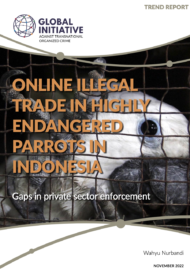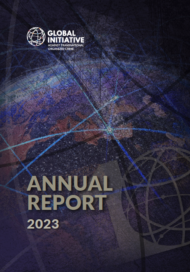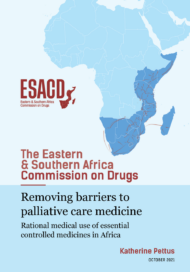Posted on 03 Feb 2017
by Fransje Molenaar & Thibault van Damme
Abstract
In 2016, an estimated 30,000 to 40,000 migrants transited through Mali on their way to Algeria and Libya. One major dilemma facing policy makers that want to stop irregular migration through Mali is that state authorities are either complicit in migration, such as by providing migrants free passage in exchange for a toll at roadblocks or by issuing false passports, or that they lack the effective presence and/or capacity to counter human smuggling. This problem is particularly salient in the north, where armed groups have taken over territorial control and offer protection to, and feed off, the human smuggling industry. At the time of writing, a solution to the internal conflict appears to lie in the distant future, meaning that addressing the issue of irregular migration remains one of the lowest priorities on the government’s agenda. Regaining political stability is its number one concern.
Executive Summary
In 2016, an estimated 30,000 to 40,000 migrants will transit through Mali on their way to Algeria and Libya. Admittedly, this flow is not as big as the migration streams passing through neighbouring Niger, which are some six to eight times larger. Understanding these routes is nevertheless crucial to grasp the larger picture of human smuggling and political stability in the Sahel. Conventional wisdom tells us that the closing down of one human smuggling route generally leads to other routes opening up. The Malian state’s absence in the north, where human smuggling is salient, has already laid the foundation for an alternative road northwards should the Nigerien route shut down.
One major dilemma facing policy makers that want to stop irregular migration through Mali is that state authorities are either complicit in migration, such as by providing migrants free passage in exchange for a toll at roadblocks or by issuing false passports, or that they lack the effective presence and/or capacity to counter human smuggling. This problem is particularly salient in the north, where armed groups have taken over territorial control and offer protection to, and feed off, the human smuggling industry. At the time of writing, a solution to the internal conflict appears to lie in the distant future, meaning that addressing the issue of irregular migration remains one of the lowest priorities on the government’s agenda. Regaining political stability is its number one concern.
A second major dilemma facing policy makers is that the group of actors behind irregular migration in Mali—the human smuggling networks—are not necessarily organised in a hierarchical manner. Instead, they build on a history of transnational (illicit) trade relations spanning across the region. Given human smuggling networks’ horizontal, interconnected nature, solving the issue of human smuggling should start in the origin countries themselves. In addition, it should be recognised that these networks involve local elites that have an important stake in (local) political life and/or that are linked to armed groups. As such, human smuggling functions as but one node in these larger relationships between smuggling, authority and the empowerment of nonstate armed forces in northern Mali more generally.
In terms of policy advice, this means that investments in a robust and inclusive political settlement for the north remain critical in addressing the issue of human smuggling. Given that the conflict’s proliferation depends to a substantial degree on the control of, and competition over, illicit trafficking routes, policy makers should continue to invest in mapping out local power dynamics to identify potential partners for action. Policy makers should also be realistic about the extent to which the Malian state’s institutions are capable and/or willing partners in the fight against irregular migration. In a situation as complex as Mali, short-term or one-sided technical solutions are doomed to fail.



